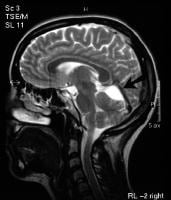
Labyrinthitis is an inflammation and irritation of the inner ear. Symptoms include dizziness, loss of balance, tinnitus, nausea, vomiting, hearning loss, and trouble focusing the eyes. The cause of labyrinthitis can be from upper respiratory infections, colds, flu, ear infections or other viral or bacterial infections. Allergies, trauma, and brain tumors can also cause inflammation of the inner ear. Over use of some medications or alcohol can be yet another cause. Diagnosis of labyrinthitis can be made with a physical and neurological examination. If further testing is done it is normally to rule out any other cause of the symptoms. These test may include CT, MRI, EEG, and hearing tests. Treatment of symptoms may be necessary during the few weeks until the inflammation decreases and symptoms subside. Treatments can include antibiotics and other medications depending on the patient's symptoms. Therapeautic movement of the head may also help decrease symptoms by moving the small stones within the labyrinth that cause dizziness back to the location they need to be. Both my parents as well as my grandma have all experienced labyrinthitis within the past year. Each had to have a different type of treatment, and after a few weeks the symptoms did subside. I have included an image of a T1 weighted MRI with and without contrast.



